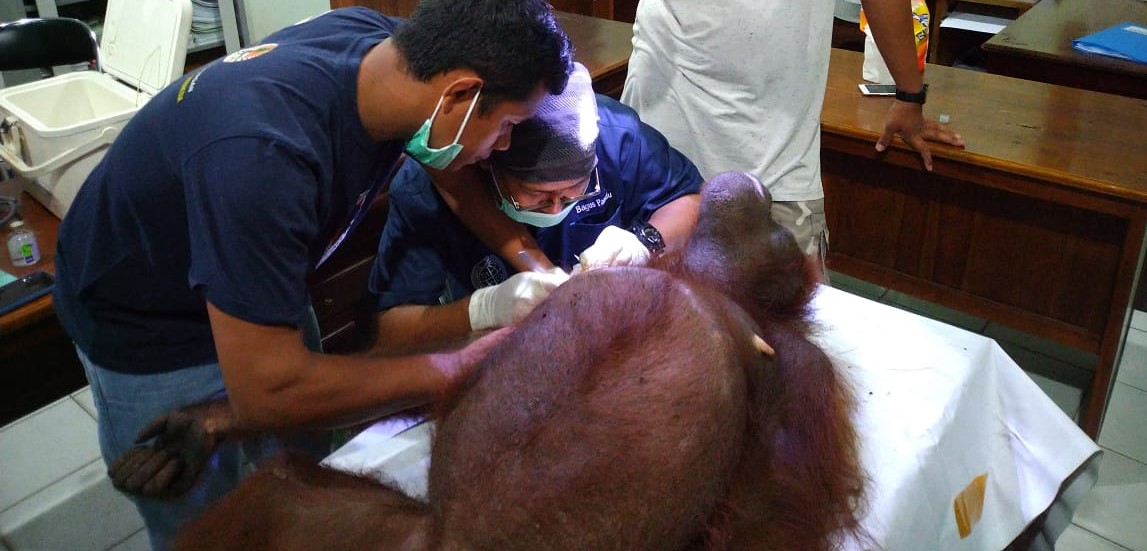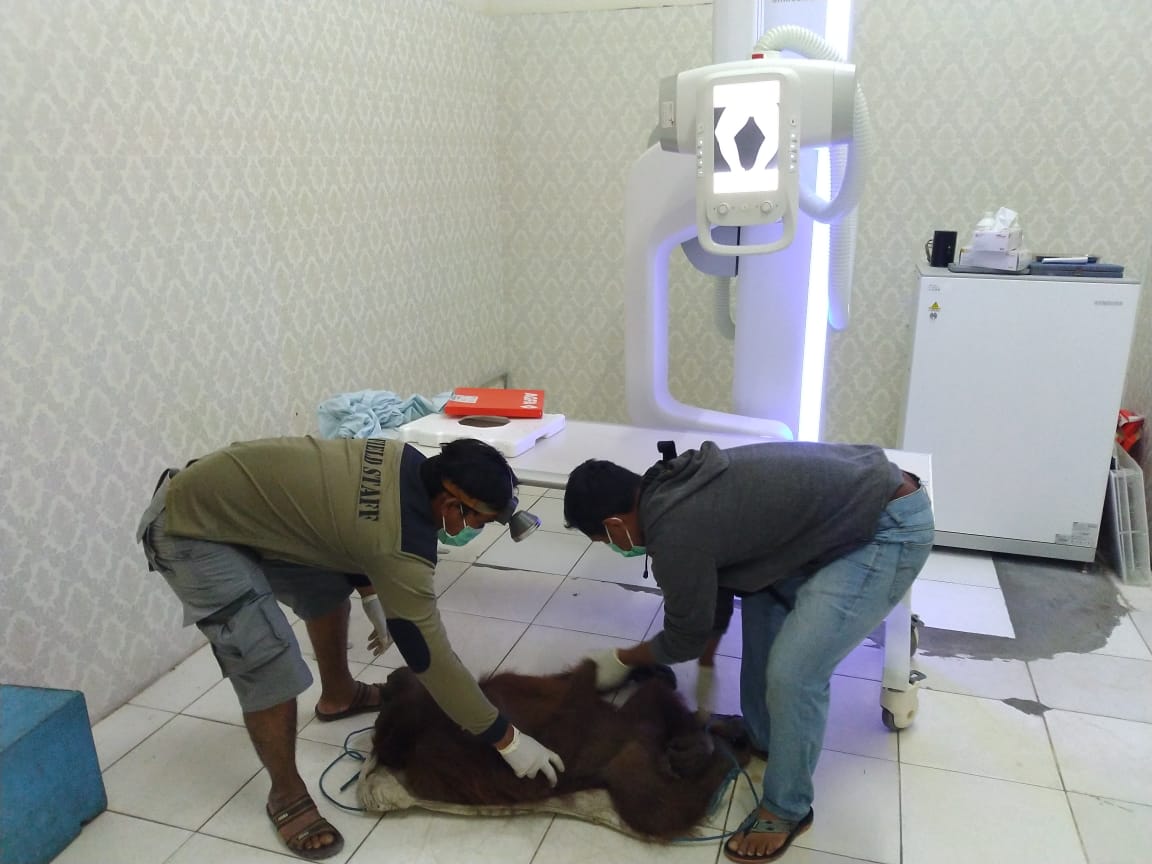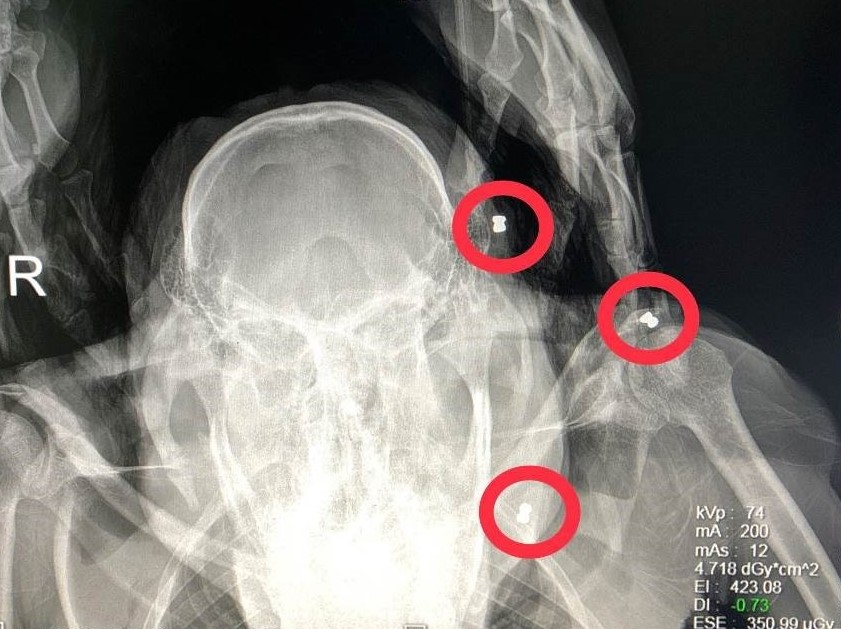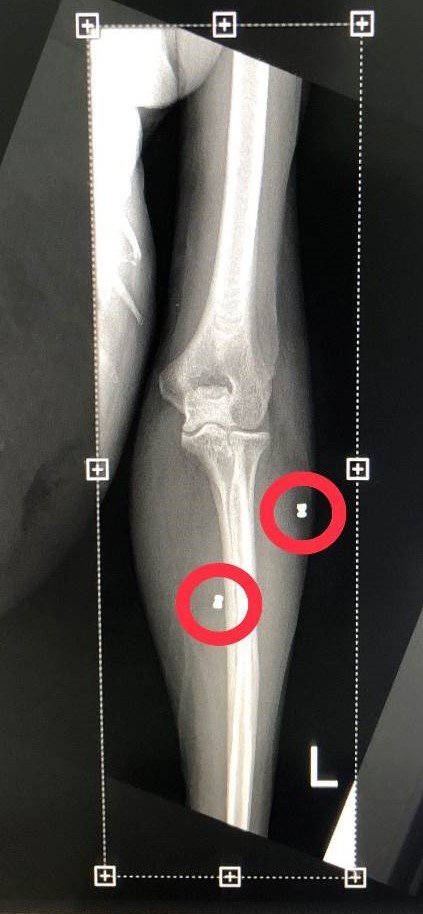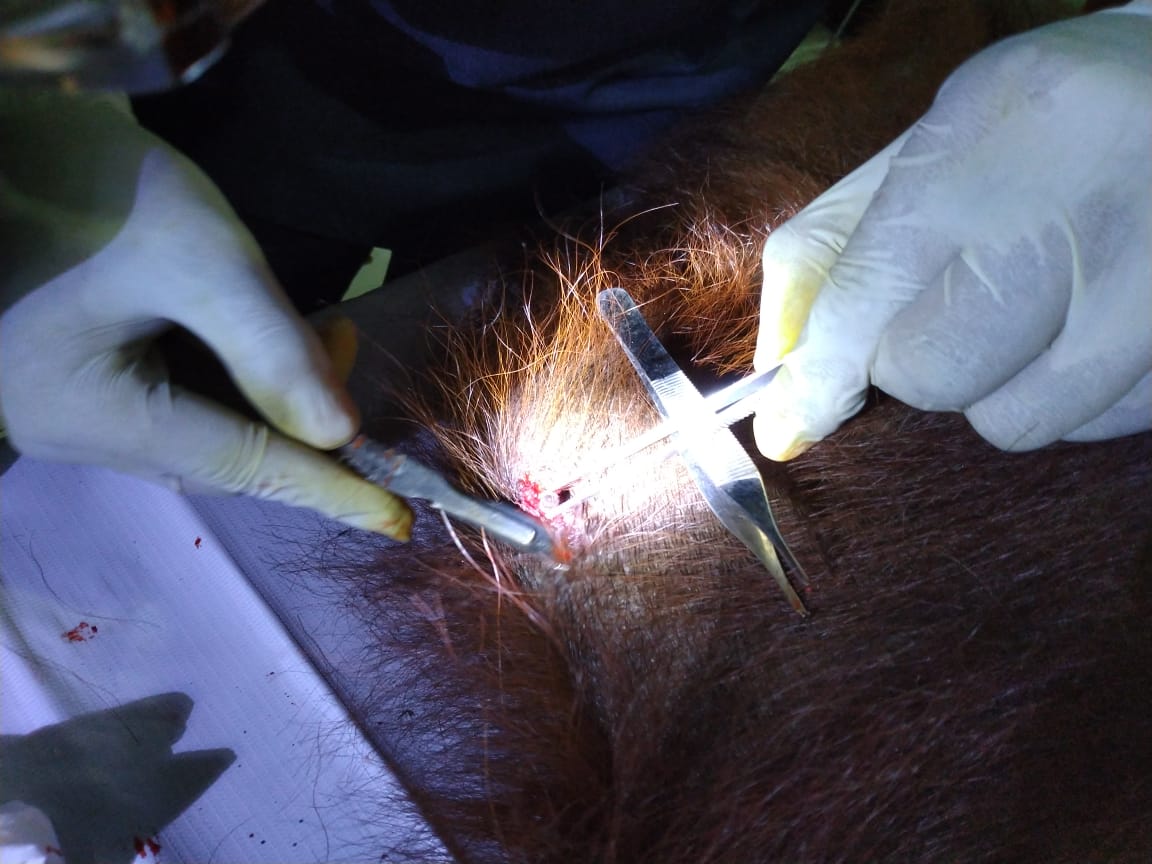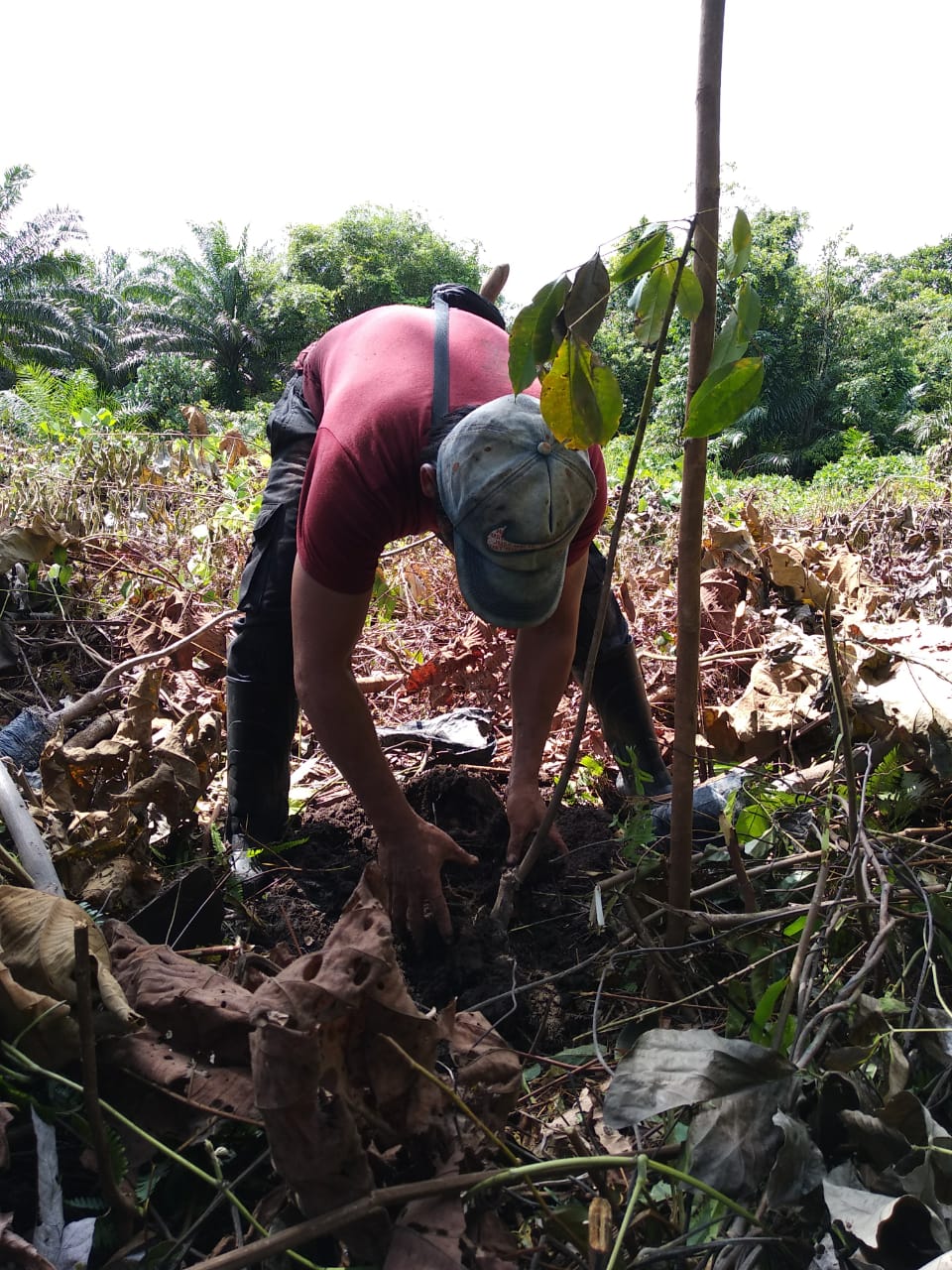Orangutans have been recorded eating over 400 different types of food, which means for mothers, the job of introducing their offspring to all the different food groups is a rather large task. Until they start to forage entirely for themselves, infant orangutans depend on their mother’s milk to sustain them.
Support orangutan conservation and keep your toes warm!
Orangutan Stories: Timtom
Orangutan Stories: Ariel
Reflecting on the achievements of 2022 for the Orangutan Foundation
Orangutans rescued from oil palm plantation marks International Orangutan Day
While people around the world celebrated the red ape this week, our team have had a busy few days spent rescuing orangutans in need. To go behind the scenes and understand some of the challenges still facing orangutans, our team in the field have put together a timeline of our most recent orangutan rescue:
Friday morning- It was reported to government officers this week that an orangutan had been spotted within a community oil palm plantation in Central Kalimantan, Indonesian Borneo. Once the location had been determined, our orangutan rescue team were then called upon to assist.
Friday 11:45am - On arrival, a female orangutan was observed with an infant in an isolated copse of trees, entirely surrounded by oil palm plantation. With the dimensions of this tiny patch of fragmented forest being a mere 10x20 metre area, and any suitable nearby forest considered too far away for the pair to travel, a decision was made to rescue them from this remote island of trees for their safety. In practice however, the strong winds and height of the trees made tranquilising the female a very difficult task, and it wasn’t until several hours later that the pair were finally safely brought down from the canopy.
Friday 6pm - With the light beginning to fade, and the female orangutan under sedation, it was the role of the veterinary team to perform a quick physical examination to check the health of the pair. Under initial inspection, it was observed that they were in relatively good health except the mother had several air rifle pellets embedded in her skin, and therefore required further attention. As the night drew closer, the pair were then carefully transported to a temporary facility for them to rest.
Sunday evening - In honour of Indonesian Independence Day on the Friday, the 16-year-old female orangutan had been called Augustine, and her young, who had been identified as a 2 or 3-year-old male, named Augusta. They had both rested and recuperated from their rescue, and now our team were required to act fast to try and observe the number and severity of Augustine’s gun pellet injuries.
Sunday 9pm - In order to monitor the number and location of the bullets in Augustine’s skin, she was taken along with Augusta to a nearby public hospital so that she could be X-rayed. After being safely anesthetised, she was found to have 7 air rifle pellets lodged in her skin.
Sunday 10:15pm - It was at this point that our veterinary team, alongside government officials, began the minor surgical procedure of removing as many bullets as possible from Augustine. The delicate operation was able to remove 5 of the pellets, with a further 2 too deeply embedded into her tissue to be able to safely extract. Fortunately, Augustine appeared to come out of the hour and 15 minute procedure in good health.
Monday 2pm - As the previous evening’s medical procedure had run so smoothly, the following day after a final check-up from our team, Augustine and Augusta were given the all clear to be released back into the wild. A safe area within the Lamandau Wildlife Reserve was selected as an ideal relocation site as this region is protected by Orangutan Foundation guard posts, and after a short boat ride, the pair were happily released into the forest. Once their transport cage was opened, our team were able to catch a quick glimpse of the orangutans before climbing into the nearby trees.
It’s encouraging to know that Augustine and Augusta will now be able to thrive in their new protected habitat. However, witnessing these orangutans initially stranded in the last remaining forest due to habitat loss, shows hows orangutans remain under threat and that the work of the Orangutan Foundation is still needed.
To find out how you can become a Guardian of Lamandau and protect Augustine and Augusta’s new home, please explore our website.
Improving livelihoods of communities living in and close to orangutan habitat
We are working with villages on the border of the Lamandau Wildlife Reserve (Indonesian Borneo) to improve livelihoods and local forest sustainability. In this area, fire is used to cleared land and to hunt wild pig and deer. Forests have been cleared to mine for minerals or to grow oil palm. We see the damage this does to forests, the vanishing habitat of orangutans and other critically endangered species.
Measuring out and survey of agroforestry demonstration plot (oil-palm plantation in the background).
As demand for land increases it is imperative to adopt sustainable livelihoods that don’t require forests to be cleared. Agroforestry has been practised traditionally in Indonesia for many centuries and it can improve farmer’s livelihoods and improve land, which is already degraded. It is a farming system that combines planting trees with agricultural crops to increase profits, both economically and environmentally.
Discussions with land owners and Sukamara KPHP about planting sengon plants in community-owned gardens
The villages we work with have voluntarily offered one hectare (roughly the size of a football pitch) of their land to be used as a demonstration plot and Orangutan Foundation are assisting with the preparation and planting of seedlings and will help to monitor their progress.
Farmers nurturing sengon seedlings for planting out.
Two of the species being grown are rubber trees (Hevea brasiliensis) used for harvesting latex and sengon or albazia (Falcataria moluccana) which is used for local timber products (firewood, matchsticks, construction materials). They are fast growing species and so can be harvested in a relatively short time and they are adaptable to varying climate conditions.
Transporting compost to plant out seedlings
Planting out of sengon seedlings
Planting rubber in the demonstraion plot
Your donation doubled to keep forests standing & orangutans in the wild
This Giving Tuesday, 27th November, from midday, your donation to Orangutan Foundation will be doubled to keep forests standing and orangutans in the wild. Click here https://secure.thebiggive.org.uk/project/forests4orangutans to have your donation doubled.
The survival of the critically endangered Bornean orangutan depends on having strictly protected forest habitat. With your generous support we are successfully providing this.
In 2018 alone, our network of guard posts and forest patrols monitoring Tanjung Puting National Park and the Lamandau Willdife Reserve have prevented the loss of thousands of acres of orangutan habitat.
Our Habitat Protection teams have detected and stopped illegal activities including logging and mining.
Our staff remain on high alert to tackle and extinguish fires, illegally lit to clear land or to hunt. It is an ongoing struggle but, with your continued support, one we are committed to winning.
By donating through the Big Give Christmas Challenge your donation will have twice the impact, helping us to keep forests standing and orangutans in the wild.
Learning to be free
Orphaned orangutans Adib (left) and Mona (right) with Orangutan Foundation field assistants.
All the young orangutans in our care had previously been kept as pets. This was a local issue and not a commercial part of the international pet trade. People out hunting birds and deer, or perhaps coming across crop-raiding orangutans in the forest, would often shoot the mother and then bring a ‘cute’ baby orangutan back as a pet. We would never hear the whole story, or find out what happened to the mothers.
Many families were reluctant to give them up, but we worked with the local authorities to encourage ‘handovers’ of these pets, so that they could be rehabilitated for release back into the wild. The young orangutans that we care for all have individual characters, and some learn faster than others. Under the care of our vet and field staff, they are all learning the skills they need to return to a life in the wild.
Meet the orangutans living at Camp JL, Lamandau Wildlife Reserve, Indonesian Borneo.
Mona (female, 3 years) and Boy (male, 5 years) spend their time trying to make nests and often use them to rest in when they are tired. Nyunyu (female, 5 years) was brought to us around the same time as Mona. She was found tied up in a garden. Despite being kept as a pet for about two years, Nyunyu displays wild behaviour.
Nyunyu was kept as a pet for 2 years but she still has a wild spirit and is the most adventurous of the orangutans at Camp JL.
Boy and Nyunyu play together and being so active, it’s difficult to get them back to their enclosure. Other orangutans return to the enclosure when it’s raining, but Nyunyu just wants to stay out and play!
Timtom (female 3.5 years) was just nine months old when she was handed over in January 2016. Adib (male 2.5 years) was found in October 2017 when he was about 1.5 years old. He is the youngest orangutan in our care. Mona plays with Timtom and Adib, encouraging them to climb high into the trees.
Timtom was only 9 months old when she was rescued, now 3.5 years, she likes to play with Adib and Mona.
Boy, likes to make nests with Mona and then they share rest in it together!
Adopting an orangutan is a unique gift for a friend or loved one, and supports an orphan for a year on their journey back to the wild.
We’ve relaunched our adoption packs and now offer a range of gifts to choose from for our postal adoption packs.
Your orangutan adoption pack will be dispatched in the post.
Please note that our 30th Anniversary Booklet is not included in adoption renewals.
Please CLICK HERE to support Mona via email by ordering an orangutan e-adoption pack.






